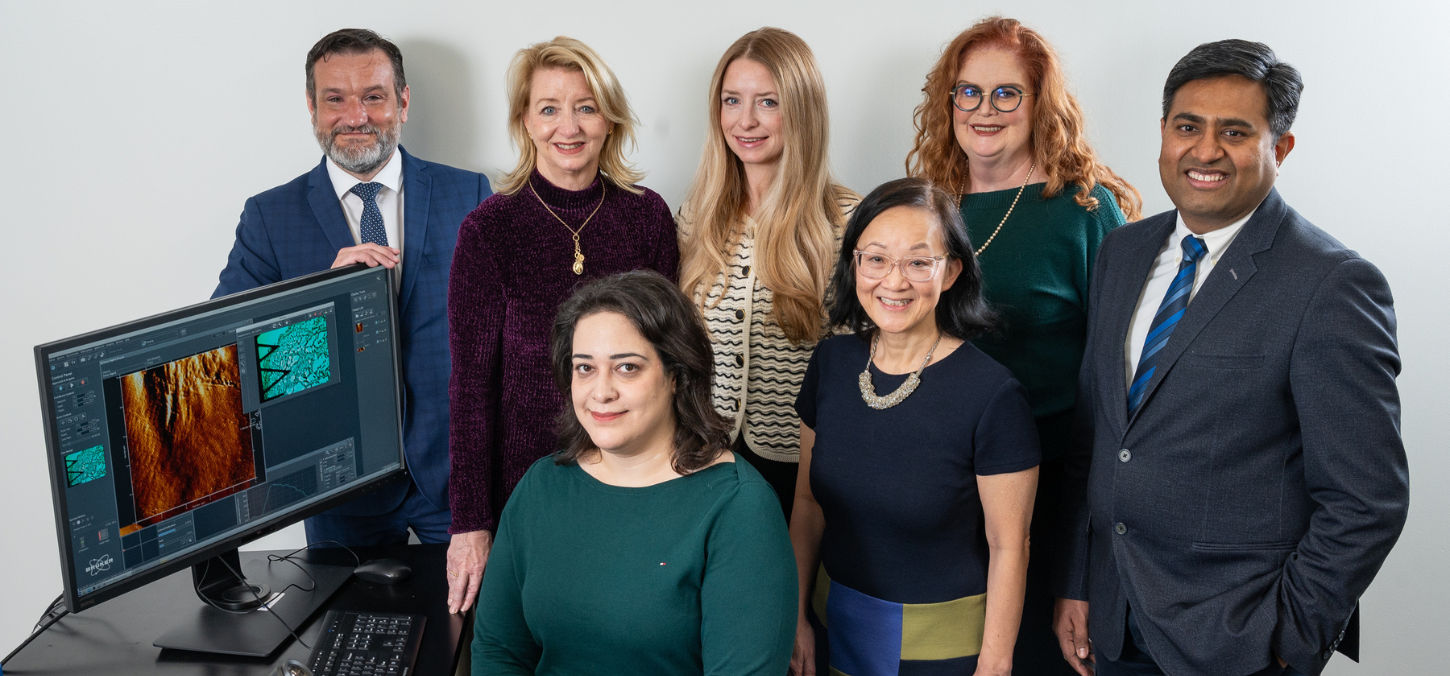
Funding to diagnose a rare disease
By Rachel Boutet
A donor’s gift boosts research for collagen disorder
Ehlers-Danlos Syndromes (EDS) are a group of rare and debilitating conditions that affect the structure and function of collagen in tissue, leading to hypermobile joints that dislocate easily, elastic and fragile skin, and chronic pain.
What type a patient has impacts the severity of symptoms and dictates which treatment options work best.
A $1.2-million gift from the Canerector Foundation to the Faculty of Dentistry will support the research of professor Laurent Bozec into better diagnostic methods for EDS. He’s looking at collagen for testing and, one day, better treatment options, too.
“Many of the EDS subtypes have a genetic component that can be tested for, but one single subtype, hypermobile EDS (HEDS), thought to be the most widespread, lacks any genetic diagnostic markers,” says Bozec.
“If we can understand the structural differences in the collagen of individuals with EDS, we can use the findings to revolutionize the diagnosis and understanding of all EDS subtypes, so that patients can access the best care to manage their condition.”
Susan Hawkins, president of the Canerector Foundation, selected Bozec’s research because of its impact on patients — and for a more personal reason.
"We watched our daughter struggle for years with pain, numerous symptoms and other diagnoses before learning that they could all be explained by HEDS,” says Hawkins. “The joy of getting this diagnosis faded as we fought to find knowledgeable healthcare professionals.”
The GoodHope Ehlers Danlos Syndrome Clinic at University Health Network was founded in 2015, but this was before that. So, in the years that followed her health issues, Hawkins says her daughter went to the U.S. for specialized neurosurgeries that eventually took her from being bedridden and using a wheelchair to being an active mother of two.
“We were fortunate that we could afford this life-altering care and we feel badly for other Canadians that continue to suffer,” she says. “Investing in Canadian research will raise awareness in our community and benefit patients worldwide."
Donations like these are essential in helping to push the needle forward in order to develop groundbreaking research that can change lives
Bozec and his team, who have been working on collagen and related disorders for 20 years, will use atomic force microscopy, which has the ability to look at images at one-tenth of the diameter of a human hair. This new funding will allow Bozec’s lab to increase the number of patients it can recruit while also looking to mice models of the condition to validate their findings.
“We know we have excellence in our researchers and facilities, but sometimes, more is required,” says Laura Tam, interim dean at the Faculty, of this large gift. “Donations like these are essential in helping to push the needle forward in order to develop groundbreaking research that can change lives.”
Bozec collaborates with GoodHope on his EDS research, and his subjects mainly come from the clinic.
“EDS is classified as a rare disorder, which often means limited interest and priority,” says Nimish Mittal, medical lead of the clinic. “As a result, progress in understanding and treating EDS has been slow. Collaboration between clinical and basic scientists is essential to drive change in managing such a complex, multisystemic disorder.”
Bozec hopes the five-year study will expand its scope across U of T to include student researchers from other health sciences faculties, and potentially patients from the United Kingdom and the United States. His goal is to be ready to receive skin biopsies from across the globe by year three. As his research expands, he plans to educate others about rare but serious conditions such as EDS.
“There is a big sense of providing hope as you do your research,” Bozec says. “I want to find answers for these patients who are craving the knowledge of what’s happening to their body, and ultimately, drive us closer to the most effective courses of treatment.”
Photo: Back row: Laurent Bozec, Susan Hawkins, her daughter Erin Somers, Susan Carleton from the Canerector Foundation, Nimish Mittal. Front row: Research fellow Mehrnoosh Neshatian, Laura Tam
Credit: Lisa Sakulensky